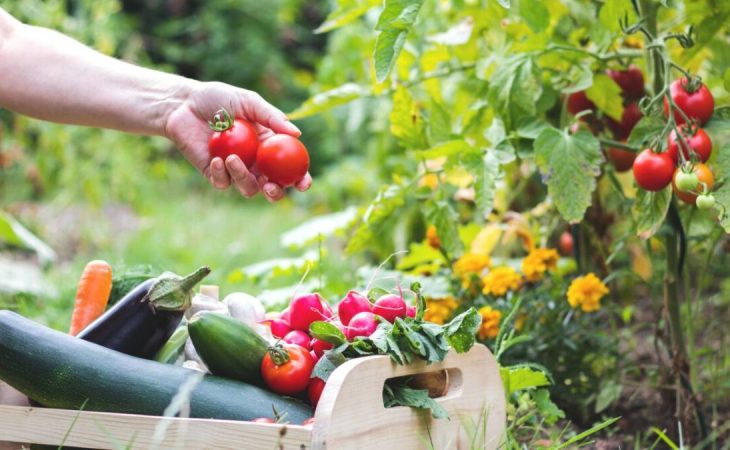The springtime temperatures may have you itching to get exterior to plant your vegetable backyard. In our pleasure to get seeds or youthful crops into the floor, even though, we can in some cases get fooled by a handful of warm days and inadvertently hurt the entire possible of a garden’s growth.
If seeking to determine out the very best timing for planting just about every veggie you want to grow leaves you totally confused, you are going to enjoy this helpful instrument we just uncovered on line.
To get a tailored report on your local developing year, together with a in depth planting information, all you need to have to do is use The Countrywide Gardening Association’s Planting Calendar Resource. After you’re there, style in your ZIP code and you will get an abundance of planting details to support you optimize your veggie harvest.
The device tells you every thing from the regular length of your location’s frost-cost-free growing season to certain timelines for the spring planting period and drop planting time for each individual type of vegetable. For example, we checked the report for Indianapolis and ended up informed the spring window to plant tomatoes was from April 27 by means of May well 11, although the report for Phoenix explained to us to plant them from Feb. 26 by way of March 11. Every single report ran down a record of much more than 30 vegetables.
The stories also tell you no matter whether you must commence your seeds indoors and then transplant the seedlings into the floor or skip that process. Vegetables such as broccoli, cabbage, eggplant, lettuce and onions should be transplanted when other individuals like carrots, cucumbers, squash and potatoes can be planted specifically into the soil.
Gardening takes a ton of treatment, energy and endurance. That is why it’s critical to have an understanding of how timing your planting is critical for a effective rising year. With resources like the a single outlined above, even new gardeners can increase their odds of a excellent harvest by getting vital data.
Just one of the major gardening errors persons make when planting veggies is putting them into the ground way too shortly. A number of warm times in early spring lull us into imagining the time is ripe for gardening. The snow may well be long gone, but the soil is frequently continue to chilly and that usually means trouble for seeds and youthful vegetation.
“One of the greatest issues people make is to plant far too early,” Weston Miller, a previous horticulturist with the Oregon Condition College Extension Support, advised the institution for a weblog write-up. “They get enthusiastic when it is sunny for a several days, place crops in the floor and believe they will develop. But the seeds both rot from damping off fungus or germinate quite gradually. At the really the very least, they’ll be pressured for the relaxation of the season and never ever capture up.”

Miller said ideal soil temperatures for planting vegetables can start as minimal as 50 degrees Fahrenheit. Even so, for heat-temperature crops, together with tomatoes and peppers, gardeners should hold out till the soil hits 65 to 70 levels (hence the various outcomes of our two stories from the Planting Calendar Software).
The University of California Master Gardeners of Santa Clara County concur with waiting around till the soil gets hotter to plant sensitive vegetable seeds and seedlings. “Planting much too early in cooler temperatures can cause stunted development, wilting, surface pitting, foliage necrosis (death) and amplified susceptibility to illness,” the firm writes.
The best choice is to do what gardening authorities phone “hardening off.” This is when younger crops are potted and set into a protected spot, like a garage or porch, to get some daylight, but make up some resistance to the weather. Hardening off prevents sensitive new plants from finding sunburn or windburn, and retains them heat adequate to develop strength ahead of they go into the soil.


![13 Best Sites to Stream UFC Live Online for Free [2024] 13 Best Sites to Stream UFC Live Online for Free [2024]](https://appearworld.com/wp-content/uploads/2024/11/13-Best-Sites-to-Stream-UFC-Live-Online-for-Free-200x125.jpg)


